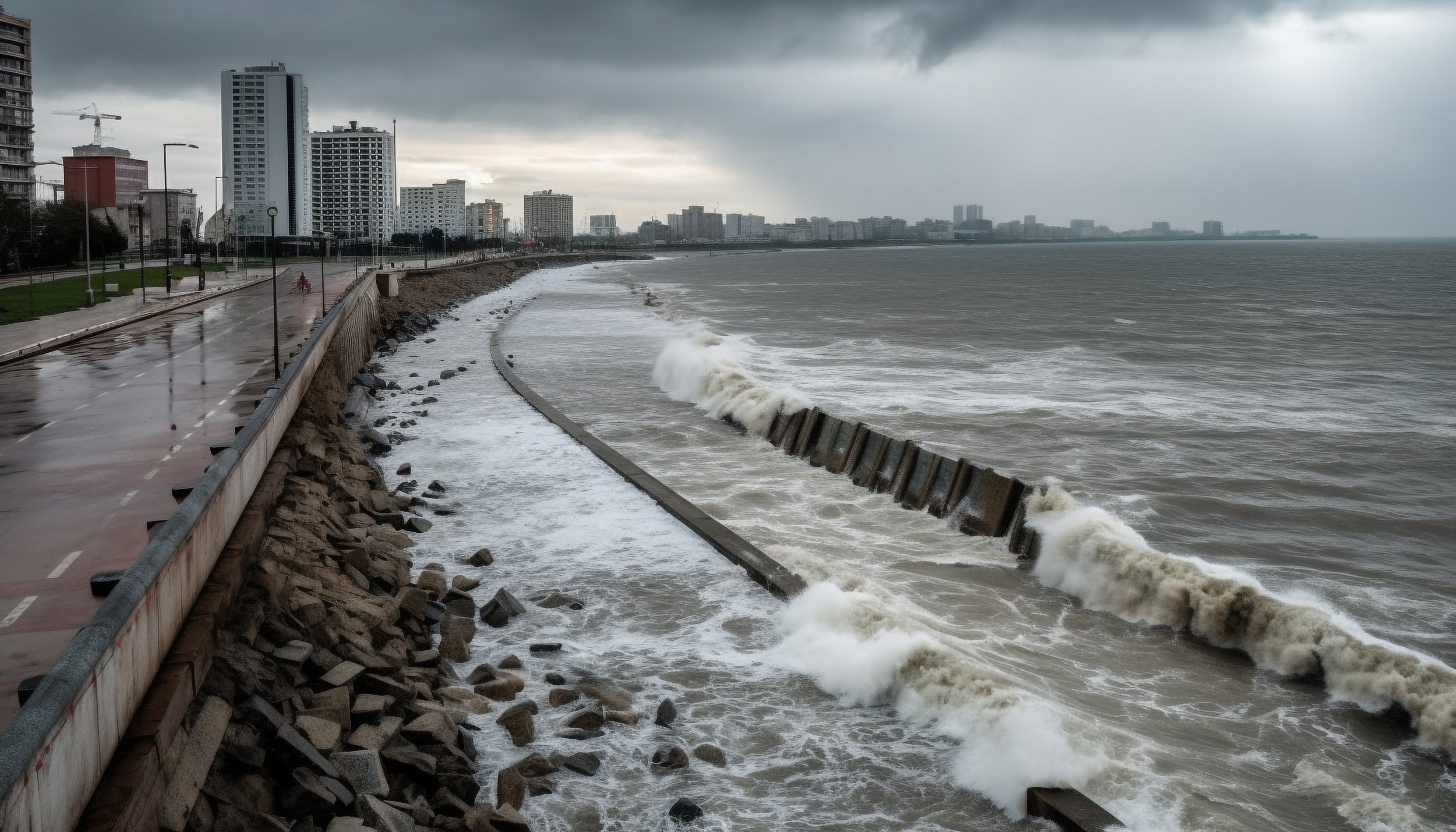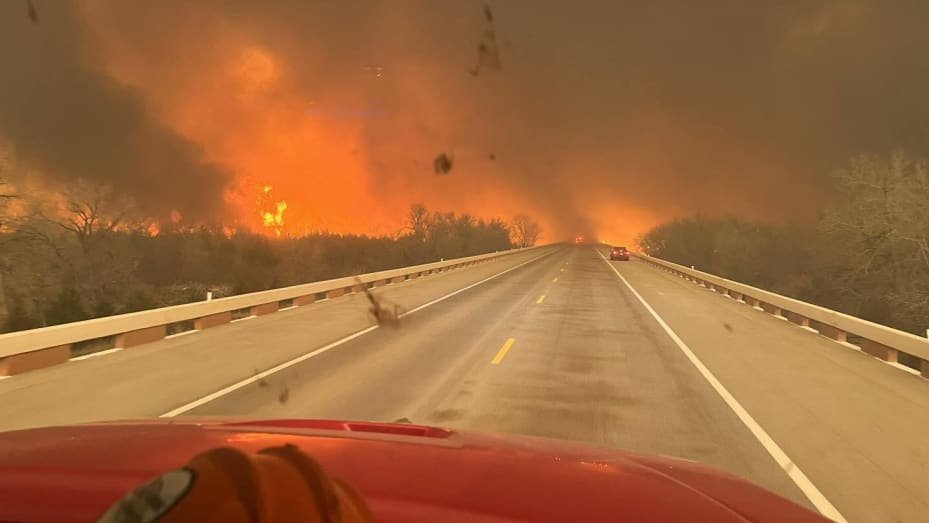JOIN the interactive discussion every Thursday at 2pm EST.

Beyond Carbon: Why Climate Credits Are a Better Bet Than Carbon Offsets
For nearly two decades, carbon credits have been the go-to tool for companies and governments seeking to paper over their environmental sins. By purchasing credits that ostensibly fund emissions reductions elsewhere—planting trees, preserving rainforests, or financing renewable energy in the developing world—polluters have been able to claim carbon neutrality without curbing emissions at source. The global carbon offset market surpassed $2 billion in 2023, yet its credibility is eroding fast.

Storm Warning: The Rising Cost of Extreme Weather for Municipal Finances
America’s municipalities are facing a storm that no budget committee can ignore: the rising costs of severe weather. In 2023 alone, the United States experienced 28 weather and climate disasters, each costing over a billion dollars, making it the most expensive year on record for natural catastrophes (NOAA Climate.gov, 2024). As hurricanes, wildfires, and floods become more frequent and severe, local governments are struggling to balance recovery costs, infrastructure investment, and growing fiscal pressures.

The Financial Levers of Climate Resilience: Why Traditional Tools Are No Longer Enough
As hurricanes intensify, floods grow more frequent, and wildfires ravage entire regions, the financial strategies traditionally employed to cope with climate-related disasters are buckling under pressure. Direct government aid, insurance mechanisms, and debt instruments like bonds, which have historically served as the bulwarks of climate resilience, are proving increasingly inadequate. With each passing storm season, it becomes clear that these tools alone cannot meet the rising financial demands of climate repair. This growing gap has sparked a conversation about the viability of a fourth financial lever: tax-incentives through charitable, tax-deductible donations, which may be the only remaining tool capable of closing the climate resilience funding gap.

Green Bonds and Corporate Philanthropy: A Symbiotic Approach to Weathering the Storm
The escalating cost of severe weather events has prompted a rethinking of how communities and businesses can share the burden. As climate change intensifies, floods, wildfires, and hurricanes are becoming more frequent and costly. While governments scramble to address these crises through disaster relief and climate adaptation measures, the private sector is increasingly stepping up, recognizing the financial and reputational risks of inaction. A promising solution lies in the combination of green bonds and corporate philanthropy, two vehicles that, when strategically aligned, could significantly reduce the cost of severe weather on vulnerable communities.

The Necessary Shift Toward Climate Resilience
The current and next generation require resilience. Carbon Offsets and investments in mitigation will not bend the global CO2 curve back towards livable until the polluters get on board (for their own children’s sake we hope its soon). In the meantime, severe weather is bankrupting communities and homeowners. Efforts to recover losses from the polluters is laudable but will take decades and hundreds of millions of dollars in legal fees.

My Safe Florida Home: Enhancing Climate Resilience through Community Investment
As the climate crisis heightens the frequency and intensity of severe weather events, Florida has taken proactive measures to protect its residents and their properties. The My Safe Florida Home (MSFH) program, a state-sponsored initiative, is designed to fortify homes against hurricanes and other natural disasters. By providing financial assistance and expert guidance, the program aims to enhance community resilience and mitigate potential damage.

Michigan Flooding in 2024 Brings Severe Financial Losses
In the early weeks of June 2024, Michigan was besieged by relentless rainstorms that caused unprecedented flooding across the state. Communities found themselves overwhelmed by the rising waters, which inundated homes, businesses, and crucial infrastructure, leading to significant financial losses.

Climate Change is Swamping the Municipal Bond Market
Climate change is not only reshaping the physical landscapes of cities but also destabilizing the financial foundations that support them. Municipal bonds, long considered a bedrock of safe investment, are being flooded with a deluge of climate resilience and repair spending bonds. As cities scramble to protect themselves from rising seas, ferocious storms, and relentless wildfires, the scale and urgency of these initiatives are swamping the municipal bond market, revealing the pressing need for private capital to bridge the growing gap between bond issuances and the actual costs of climate adaptation.

Newport Resilience fights back against the rising tide…and wind…and rain
It’s no secret the rise in severe weather is impacting Newport. Storms across Rhode Island are getting stronger and more frequent. And where NOAA predicts 25 named Atlantic storms this season, including 12 hurricanes, we’re very likely to see more strong storms ahead.

The Long-Term Financial Benefits of Investing in Climate Resilience
As the world grapples with the escalating impacts of climate change, a growing body of research underscores the significant long-term financial benefits of investing in climate resilience. The economic rationale for these investments is compelling, with recent reports highlighting that the cost of inaction far outweighs the expenditures needed to bolster resilience.

Beach Renourishment: Weighing the sands of time.
Beach renourishment, the process of adding sand to eroding beaches, is a widespread response to the creeping threat of coastal erosion. It is a solution with significant economic, environmental, and social implications, drawing both praise and criticism. As climate change intensifies and sea levels rise, this practice has become increasingly prominent. Evaluating its merits and drawbacks requires a nuanced understanding of its implementation across various locations.

Building a climate resilience strategic plan
As the impacts of climate change continue to escalate, communities, governments, and organizations around the world are increasingly recognizing the need to build resilience to withstand and adapt to these challenges. A well-crafted climate resilience strategic plan is essential for guiding efforts to enhance resilience and mitigate the risks posed by climate-related hazards. Drawing on examples and resources from published climate resilience plans, here are the top 10 priorities that such a plan should address:

Beyond property insurance
As climate change continues to accelerate homeowners should look beyond just traditional property insurance. Below is a summary list of other types of insurance available. Check with your agent before the next storm hits.

Inconvenient truths about sustainability
The ‘sustainability’ discussion must evolve to sustainability and resilience - because the climate is not sustaining.

Property self-insurance can lead to increased climate resilience.
In many regions across the United States insurance companies are exiting markets or increasing rates dramatically due to the high risk of severe weather events. This may be a blessing in disguise. Homeowners who choose to self-insure or have no other option are now taking the precautionary actions that insurance carriers have been advocating to their customers but with little success. Now that ‘you’re on your own’ dollars otherwise spent on premiums can be redirected towards loss mitigation efforts and reserve funds.

Family financial planning in a time of climate crisis
Family conversations about financial planning take on a new urgency in an era of climate crisis. From extreme weather events to shifting market landscapes, the financial impact of climate change will impact all families regardless of socio-economic position. Engaging in open discussions about climate-related financial planning can serve as a vital first step toward resilience.

From Montreal to Paris to today
Two landmark environmental agreements stand out in the fight against global environmental threats: the Montreal Protocol of 1987 and the Paris Accord of 2015. Both agreements aimed to address urgent issues endangering the planet, but their paths to success vary significantly. While the Montreal Protocol successfully eliminated ozone-depleting substances (ODS), the Paris Accord faces a more complex challenge in curbing carbon emissions. This post explores the distinctive factors behind the success of the Montreal Protocol and why replicating its triumphs for carbon reduction proves elusive.

Different regions, different severe weather risks
Severe weather events can have a significant impact on property values, affecting both short-term market dynamics and long-term property appreciation. The specific effects can vary based on the type and severity of the weather event, as well as the preparedness and resilience of the local community. Here are several ways severe weather can influence home property values:

The impact of severe weather on property value
Severe weather events can have a significant impact on home property values, affecting both short-term market dynamics and long-term property appreciation. The specific effects can vary based on the type and severity of the weather event, as well as the preparedness and resilience of the local community. Here are several ways severe weather can influence home property values:

10 ways to build financial resilience to climate change.
Building financial resilience to climate change and severe weather events is crucial in the face of an increasingly unpredictable climate. Here are ten strategies to help individuals and communities prepare for and navigate the financial challenges posed by climate-related risks: